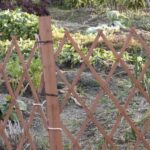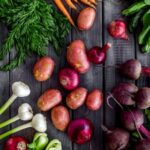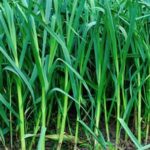Are you a North Carolina resident interested in starting your own vegetable garden? Look no further. This North Carolina Vegetable Gardening Guide will provide you with all the information you need to get started on the right foot. From climate and growing seasons to soil preparation and plant selection, this guide has got you covered. Whether you’re a seasoned gardener or just getting started, this guide will help you cultivate a successful vegetable garden in North Carolina.
North Carolina’s diverse climate and growing seasons present unique opportunities and challenges for vegetable gardening. Understanding the specific conditions in your region is crucial for choosing the right vegetables and ensuring a bountiful harvest. In this guide, we’ll take a closer look at the climate and growing seasons in North Carolina to help you make informed decisions when planning your garden.
With its rich agricultural history, North Carolina offers a wide variety of vegetables that thrive in its soil and climate. From leafy greens to root vegetables, there are numerous options to choose from when deciding what to grow in your garden. We’ll explore the best vegetables for North Carolina and provide tips on selecting the right varieties for your specific location. So grab your shovel and let’s get started on your North Carolina vegetable gardening journey.
Climate and Growing Seasons in North Carolina
North Carolina has a diverse climate, with the western part of the state experiencing cooler temperatures and the eastern part having a more humid subtropical climate. Understanding the climate and growing seasons in North Carolina is essential for successful vegetable gardening.
The state has three primary growing seasons: spring, summer, and fall. The timing of these seasons varies depending on the specific location within North Carolina. Coastal areas have longer growing seasons than mountainous regions. For example, in the eastern part of the state, the last frost date is typically in late March to early April, while in the western part, it can be as late as mid-May.
It’s crucial for gardeners to take into account the USDA Hardiness Zones when selecting vegetables for their garden. For most parts of North Carolina, zones range from 6a to 8a, which determines which plants are most likely to thrive based on the average annual minimum winter temperature.
A great resource for North Carolina vegetable gardeners is the “North Carolina Vegetable Gardening Guide” published by NC State Extension. This guide provides detailed information about planting dates, recommended vegetable varieties, and best practices for successful vegetable gardening in different regions of North Carolina.
| Climate Zone | Last Frost Date |
|---|---|
| Coastal Areas | Late March to Early April |
| Mountainous Regions | Mid-May |
| USDA Hardiness Zones |
Choosing the Right Vegetables for North Carolina
When it comes to choosing the right vegetables for your North Carolina garden, it’s important to consider the unique climate and growing seasons of the state. North Carolina offers a diverse range of climates, from the mountains in the west to the coastal plains in the east, so it’s essential to select vegetables that are well-suited to your specific region.
Some of the best vegetables to grow in North Carolina include tomatoes, peppers, squash, cucumbers, okra, and sweet potatoes. These warm-season crops thrive in North Carolina’s hot and humid summers. Additionally, cool-season vegetables such as lettuce, cabbage, carrots, and broccoli can be successfully grown during the milder fall and spring months.
It’s also important to consider the average frost dates in your specific area of North Carolina when selecting which vegetables to grow. Understanding the first and last frost dates will help you plan and choose vegetables that have enough time to mature before winter sets in. By selecting the right vegetables for your region and planting them at the appropriate times, you can maximize your garden’s yield and success.
In addition to considering climate and growing seasons, it’s also beneficial to choose vegetables that are resistant to common pests and diseases found in North Carolina. This can help reduce the risk of potential problems in your garden.
By carefully selecting your vegetable varieties based on regional considerations, you can set yourself up for a successful harvest in your North Carolina vegetable garden. For further guidance on which veggies are best-suited for planting in North Carolina gardens or additional tips on how best to cultivate them check out our comprehensive north carolina vegetable gardening guide available online.
Soil Preparation and Maintenance for Vegetable Gardening
When it comes to vegetable gardening in North Carolina, soil preparation and maintenance are key factors for success. The state’s diverse geography and climate mean that different areas may have varying soil types and conditions. Whether you’re gardening in the mountains, Piedmont, or coastal regions, it’s important to understand how to prepare and maintain your soil for optimal vegetable growth.
Soil Testing and Amendment
Before planting your vegetable garden, it’s crucial to conduct a soil test to determine its pH level and nutrient content. This can be done through local extension offices or private soil testing labs. Once you have the results, you can then amend the soil as needed by adding organic matter, lime, or other nutrients to ensure it is at an optimum level for growing vegetables.
Seasonal Soil Maintenance
In North Carolina, the weather can vary greatly from season to season. During the hot summer months, it’s important to provide mulch around your plants to help retain moisture and keep the soil cool. In contrast, during the colder winter months, you may need to protect your garden from frost with row covers or other protective measures. Additionally, regular weeding and tilling of the soil are essential tasks for maintaining healthy vegetable beds throughout the year.
Composting and Organic Practices
For environmentally conscious gardeners in North Carolina, composting is a great way to maintain healthy soil without relying on synthetic fertilizers. By creating a compost pile from kitchen scraps, yard waste, and other organic materials, you can enrich your garden soil naturally and sustainably. Additionally, practicing organic gardening methods such as crop rotation and using natural pest control measures can help maintain a healthy balance in your North Carolina vegetable garden.
By paying careful attention to soil preparation and ongoing maintenance in your North Carolina vegetable garden, you’ll be setting yourself up for success in growing a bountiful harvest of fresh produce throughout the growing season.
Planting and Cultivation Tips for North Carolina Gardeners
When it comes to planting and cultivating a successful vegetable garden in North Carolina, there are several tips that can help ensure your plants thrive in the state’s unique climate. Consider these guidelines as you plan and maintain your garden:
- Choose the right varieties: Select vegetable varieties that are well-suited for North Carolina’s climate and growing seasons. Consult with your local agricultural extension office or nurseries for recommendations on the best varieties for your specific region within the state.
- Timing is key: Pay attention to planting dates and recommended cultivation practices for each vegetable crop. North Carolina’s diverse climate means that timing can vary depending on whether you are in the mountains, piedmont, or coastal plain regions.
- Proper spacing: When planting your vegetables, be sure to follow spacing recommendations to allow for adequate airflow and sunlight. Crowded plants are more susceptible to disease and may not produce as well.
In addition to these general tips, it’s important to take into account the specific needs of each type of vegetable you plan to grow. Some vegetables may require additional care or specialized growing conditions. Utilizing resources such as the North Carolina Vegetable Planting Calendar from the Cooperative Extension Service can provide valuable information on when and how to plant specific crops.
Overall, careful planning and attention to detail will go a long way in ensuring success with your North Carolina vegetable garden. By following these planting and cultivation tips, you can maximize your garden’s potential and enjoy a bountiful harvest of fresh, homegrown produce.
Pests and Diseases Common in North Carolina Vegetable Gardens
Common Pests
One of the most common pests that North Carolina vegetable gardeners face is the tomato hornworm. These large, green caterpillars can quickly decimate tomato plants if left unchecked. Other common pests include aphids, whiteflies, and cabbage loopers. It’s important to regularly inspect your plants for signs of pest infestations and take proactive measures to control them.
Preventing and Managing Pests
To prevent pest infestations in your North Carolina vegetable garden, consider implementing natural pest control methods such as planting companion plants that deter pests, using floating row covers, and hand-picking larger pests like hornworms. Additionally, practicing crop rotation can help reduce pest populations by disrupting their life cycles.
Common Diseases
North Carolina vegetable gardens are susceptible to a range of diseases including early blight, powdery mildew, and bacterial spot. These diseases can impact a variety of crops including tomatoes, cucumbers, and peppers. Proper care and maintenance practices can help minimize the risk of disease in your garden.
By being aware of common pests and diseases in North Carolina vegetable gardens, gardeners can take proactive steps to prevent infestations and keep their plants healthy throughout the growing season. Regular inspection, proper maintenance practices, and quick intervention when issues arise are essential for successful vegetable gardening in North Carolina.
Harvesting and Storing Your North Carolina Vegetable Garden
When it comes to harvesting your vegetables in North Carolina, timing is key. Here are some tips on when and how to harvest common vegetables in your North Carolina garden:
– Tomatoes: Harvest when they are fully colored and slightly soft to the touch. Be careful not to bruise them while picking.
– Bell Peppers: Wait until they are firm and a glossy green color before harvesting.
– Squash and Zucchini: Harvest when they are small to medium in size, as larger ones tend to be more tough and bitter.
– Cucumbers: Pick them when they are firm and a dark green color, before they turn yellow.
In addition to proper harvesting techniques, it’s important to know how to store your harvested vegetables for maximum freshness. After harvesting, you can follow these tips for storing your vegetables:
1. Root Vegetables: Store them in a cool, dark place with high humidity, such as a root cellar or refrigerator crisper drawer.
2. Leafy Greens: Wrap them loosely in a damp paper towel and store in the refrigerator to maintain crispness.
3. Tomatoes: Store at room temperature away from direct sunlight until ripe, then transfer to the refrigerator if not eaten immediately.
By following these simple guidelines for harvesting and storing your vegetables, you can enjoy the fruits of your labor for longer periods of time.
Resources for North Carolina Vegetable Gardeners
In conclusion, the North Carolina Vegetable Gardening Guide provides valuable information and resources for both novice and experienced gardeners. With a diverse climate and growing seasons, North Carolina offers a wide range of opportunities for vegetable gardening. By understanding the climate and choosing the right vegetables, North Carolina gardeners can set themselves up for success.
Additionally, the guide offers comprehensive information on soil preparation, planting tips, and cultivation techniques specifically tailored to North Carolina’s unique conditions. By following these guidelines, gardeners can ensure healthy and thriving vegetable gardens throughout the state.
Finally, with resources such as local organizations, nurseries, and online tools available to North Carolina gardeners, there is ample support and knowledge accessible to help achieve a successful harvest. By utilizing these resources in combination with the recommendations outlined in the North Carolina Vegetable Gardening Guide, gardeners can enjoy bountiful yields of delicious homegrown produce.
Whether you are just starting out or looking to improve your gardening skills, this guide aims to promote a thriving vegetable gardening community across North Carolina.
Frequently Asked Questions
What Vegetables Grow Well in North Carolina?
North Carolina’s climate is suitable for growing a variety of vegetables, including tomatoes, peppers, squash, zucchini, cucumbers, beans, and sweet potatoes. These crops thrive in the warm, humid conditions common in the state.
When Should I Start My Vegetable Garden in NC?
For most areas of North Carolina, the best time to start a vegetable garden is in early spring, around March or April. This timing allows the soil to warm up and reduces the risk of frost damaging young plants.
What Is a Good Layout for a Vegetable Garden?
A good layout for a vegetable garden includes organizing crops based on their height and sun exposure needs. Taller plants should be placed on the north side of the garden to avoid shading smaller ones. Additionally, grouping together vegetables with similar water and nutrient requirements can improve overall growth and yield.

If you’re looking to get into vegetable gardening, or are just looking for some tips on how to make your current garden better, then you’ve come to the right place! My name is Ethel and I have been gardening for years. In this blog, I’m going to share with you some of my best tips on how to create a successful vegetable garden.





